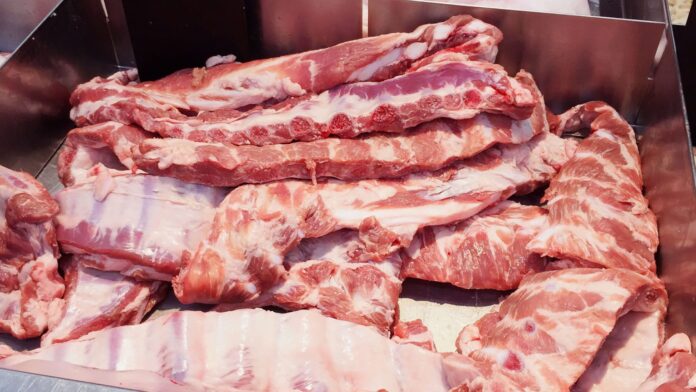-
Department of Agriculture Memorandum Circular No. 23 allows distribution of pork imports under the expanded Minimum Access Volume (MAV Plus) scheme outside of the National Capital Region Plus
-
The move is designed to plug the pork supply shortage all over the country
-
The circular also expands distribution channels, allowing the sale of pork MAV Plus to processors and institutional buyers
-
MAV Plus has had “very low utilization” as a result of the “very strict market restrictions and distribution”
-
Meat processors question the circular, claiming it will not cut high prices
-
They said the main problem is lack of freezers in wet markets, which the circular does not solve
The Department of Agriculture has expanded markets and distribution channels for pork imported under the Minimum Access Volume (MAV) Plus scheme to plug the considerable pork supply shortage all over the country.
Memorandum Circular No. 23, issued on Oct. 25 and signed by Agriculture Secretary William Dar, allows distribution of pork MAV Plus “outside of the National Capital Region (NCR) Plus (Metro Manila, Bulacan, Rizal, Laguna, and Cavite) to areas with relatively high prices of pork meat.”
In addition, it expands the distribution channels, allowing the sale of pork to processors and institutional buyers.
The circular said pork MAV Plus has had “very low utilization” as a result of “very strict market restrictions and distribution, thereby defeating the objectives of Executive Order (EO) No. 133, series of 2021 which are to address the supply gap in pork meat, provide consumers with adequate and affordable meat, and to lower inflation.”
EO 133 signed by President Rodrigo Duterte in May increased the MAV allocation for pork imports in 2021 to 254,210 MT from the previous 54,210 MT to address low pork inventories and rising prices due to the outbreak of the African Swine Fever. MAV refers to the volume of quantity of a specific agricultural commodity that may be imported with a lower tariff.
National Meat Inspection Service Memorandum Order No. 07-2021-286, which implemented the MAV Plus scheme under EO 133, restricted the sale of imported pork in wet markets, KADIWA centers and supermarkets to NCR Plus.
“Global problems of transport and movement of imported goods due to the pandemic” have “affected arrival of 70% or 140,000 metric tons of pork for July to October, from the usual 30-40 days after-shipment transit time, it has extended to 120 days. Hence, the arrival of the remaining 30% or 60,000 MT on January 2022 or the end of MAV year 2021 has to be fast-tracked,” MC 23 said.
Despite the expanded pork imports, inflation rate in many areas was still higher than the national inflation rate of 4.2% from January to August 2021, the circular noted.
The circular was slammed by the Philippine Association of Meat Processors, Inc. (PAMPI). In a statement, it said the circular “is an exercise in futility and will not address the unabated high prices of pork.”
While government jacked up volume of pork imports and cut tariffs, it did not address constraints on selling imported pork, which enters the country in frozen form: the lack of freezers in wet markets, PAMPI said.
“Stall owners in wet markets do not have freezers. They barely have enough capital to pay for daily deliveries of fresh pork. So how can they sell imported pork even if they are priced cheaper?” the association pointed out.
“On the other hand, importers and traders who fell for the reduced tariff incentive cannot move their imported pork to the wet markets. As a result, imported pork products are tied up in cold storage,” it added.
This dovetails with an earlier statement from the Cold Chain Association of the Philippines, which said its members’ facilities have high occupancy rates due to meat imports stuck at its cold stores.
READ: Meat imports, holiday season lift cold storage sector
A newspaper report also quoted Pork Producers Federation of the Philippines Inc. president Rolando Tambago as saying the DA circular is both anti-local producers and anti consumers since it will in the end translate to low local supply and the subsequent higher retail prices.
He questioned the expanded market and distribution channels ordered by the circular, saying there is no shortage of pork in those areas. He said Visayas and Mindanao are even experiencing a pork surplus, with their pork producers even sending a supply to Luzon.





